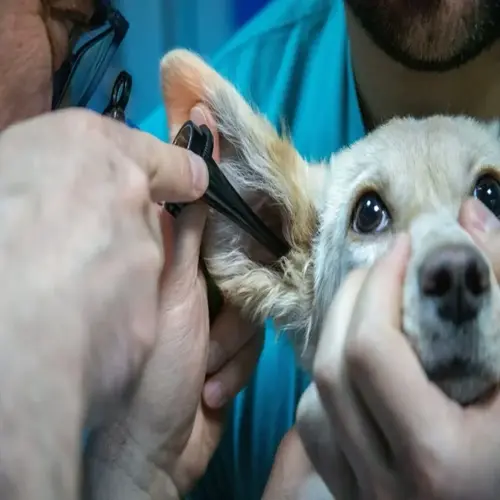Dog Harness Types: Essential Guide

Written by
Elin Eriksson
Reviewed by
Prof. Edward Clarke, Ph.D.Knowing what type of harness to use is valuable for preventing injury to the dog's trachea and for safety and control while walking the dog.
Choosing a harness tailored for your breed of dog accounts for your dog's specific body style and any vulnerabilities it may have.
Matching the harness to your activity will promote safety while walking, running, or traveling with the dog.
Proper function or fitting of a harness requires correct neck/chest measurements and consideration for seasonal adjustments.
Choosing the harness material is important to balance durability, comfort, and climate needs.
Knowing and debunking harness myths can lead to the safest harness for your dog.
Article Navigation
Choosing the right types of dog harnesses is more protective of your pet's neck than collars ever could be. Collars can place dangerous pressure on a dog's windpipe, especially when the dog pulls. Harnesses safely distribute the force across the chest. This prevents injuries like tracheal collapse.
We'll look at five harness designs you need to know about: the back clip, front clip, step in, vest and no pull designs. Each design serves a different purpose; back clip is good for calm walkers, front clip is useful for training, step in is suited to small breeds, vests give padding for comfort and no pull stops strong pullers.
Select a harness suited to your dog's size, daily activities, and needs. The Great Dane hiking in the woods requires different help than when the city dog walks with the Chihuahua. Proper fit is essential to avoid rubbing and discomfort. Take care in measuring the neck and chest. Keep equipment adjusted to seasonal changes in coat.
A correctly fitted harness stops injuries and escapes. Under each strap, always do the two-finger test. Look for restricted movement. Check for redness on the skin after use. Make sure your dog moves freely and without choking risk.
Essential Harness Types
Back-clip harnesses have the leash attached between the shoulder blades. This traditional style is appropriate for easy-going dogs that walk gently. There is minimal pressure on the neck, but minimal help from training. They are useful for non-pullers. They should not be used for dogs that are great pullers or require extendable leashes.
Front clip harnesses attach to the chest, soon redirecting pulling force to the side. Front clip harnesses are ideal for training medium-pull dogs, such as Labrador Retrievers. It is best to use a shorter leash when using a front clip harness. The design helps prevent lunging and also protects joints.
Step-in harnesses allow your dog to effortlessly step into the harness by placing their front legs through the loops, avoiding any sensitivity around their head. These harnesses are well-suited for tiny breeds like Chihuahuas. Super light mesh helps prevent overheating. Use with either nylon for strength or neoprene for water play.
No-pull harnesses use sternum pressure to discourage pulling instantly. Essential for powerful breeds like Huskies. Martingale systems tighten only during pulling. Dual clips allow training progression.
Vest harnesses distribute pressure evenly across the chest. Great for long-haired Collies or small dogs needing padding. They reduce fur matting and feature handles for lifting over obstacles.

Back Clip Harness
- Fact: Features a single leash attachment point centered precisely between the shoulder blades to minimize restriction during neighborhood walks and casual strolls.
- Ideal for calm dogs with gentle walking habits where pulling behavior is not a significant concern for pet owners during daily exercise.
- Simple design allows quick application but offers no training benefits for excitable pets that tend to lunge or pull unexpectedly.
- Commonly constructed from durable nylon materials with multiple adjustable straps ensuring a snug yet comfortable chest fitting.
- Avoid pairing with retractable leashes to prevent dangerous entanglement around the dog's legs during outdoor adventures.
- Machine-washable variants simplify maintenance routines after muddy park visits or rainy walking sessions throughout the year.
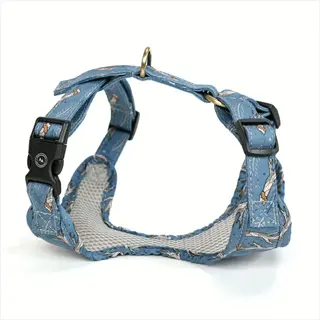
Front Clip Harness
- Fact: Leash connects to a chest ring that effectively redirects forward momentum sideways when dogs pull during neighborhood walks.
- Recommended for leash training beginners and managing medium-strength pullers during daily exercise routines with pets.
- Requires shorter leashes to prevent leg tangling problems and ensure consistent pressure redirection for effective control.
- Reinforced stitching at critical stress points provides exceptional durability for large breeds like Labradors and Shepherds.
- Adjustable straps accommodate growing puppies and allow customized fitting adjustments across the ribcage area.
- Reflective safety strips enhance visibility significantly during early morning or late evening walks in low-light conditions.
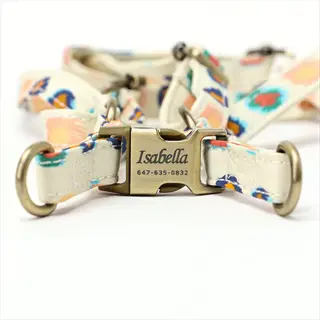
Step-In Harness
- Fact: Dogs place front paws through designated leg loops instead of having gear pulled over their sensitive head area.
- Perfect solution for head-shy pets or miniature breeds like Chihuahuas and Dachshunds with delicate physical frames.
- Quick-release buckles enable fast application but provide less security against escape artist canines during walks.
- Lightweight designs incorporate breathable mesh panels that prevent overheating during warm weather outdoor activities.
- Padded chest plates distribute pressure evenly across the torso for toy breeds under fifteen pounds.
- Limited shoulder coverage makes this unsuitable for strong pullers or vigorous hiking adventures on trails.

No-Pull Harness
- Fact: Specialized front D-ring applies gentle pressure across the sternum area to discourage pulling behavior immediately.
- Essential for powerful pullers like Huskies or during intensive obedience training sessions with professional handlers.
- Dual attachment points allow smooth transition between training mode and relaxed walking configurations as needed.
- Padded neoprene lining prevents uncomfortable chafing during extended use with energetic dogs in various conditions.
- Martingale-style tightening mechanism activates only during pulling incidents without constant torso pressure.
- Heavy-duty buckles withstand over 250 pounds of force for extra security with large determined breeds.
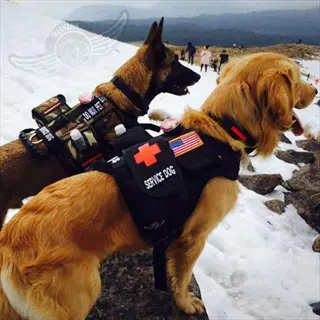
Vest Harness
- Fact: Full-coverage design distributes pressure evenly across the chest and torso through wide surface panels.
- Best for long-haired breeds like Collies and small dogs needing extra padding for daily walking comfort.
- Reduces fur matting and skin irritation through smooth surface contact points along the body contour.
- Adjustable belly straps ensure secure fit without restricting natural shoulder blade movement during running.
- Molded plastic handles allow owners to safely lift dogs over obstacles during hiking adventures.
- Moisture-wicking fabrics keep dogs comfortably cool during summer months while preventing rub spots.
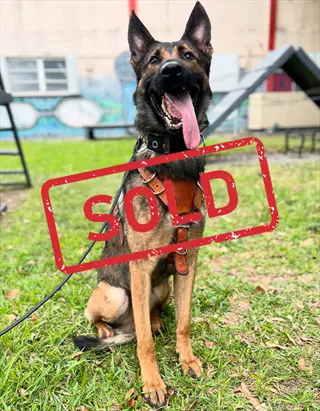
Dual Clip Harness
- Fact: Features both chest and back attachment points for versatile control options during different activities.
- Enables smooth transition from training sessions to casual walks without changing equipment configurations.
- Ideal for adolescent dogs learning leash manners who need varying levels of guidance control.
- Reinforced stitching prevents clip detachment during unexpected lunges or high-energy pulling situations.
- Adjustable straps accommodate body changes during growth periods or seasonal weight fluctuations.
- Color-coded clips help owners quickly identify front versus back attachment points during daily use.
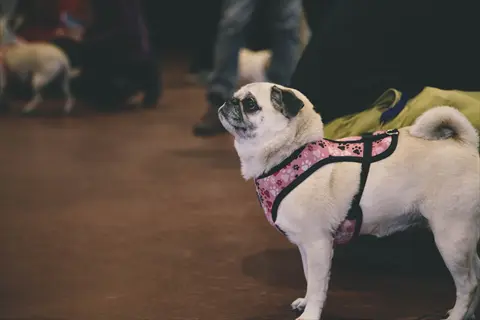
Safety Harness
- Fact: Incorporates third belly strap and martingale system to prevent escape artists from slipping out.
- Essential for rescue dogs, anxious pets, or breeds prone to backing out of standard harnesses.
- Five-point adjustment system allows precise customization around neck, chest, and waist measurements.
- Padded lining prevents fur loss and skin irritation during extended wear in various weather conditions.
- Reflective piping enhances visibility significantly during nighttime walks in urban environments.
- Crash-tested versions provide vehicle safety when used with certified dog seatbelt attachments.
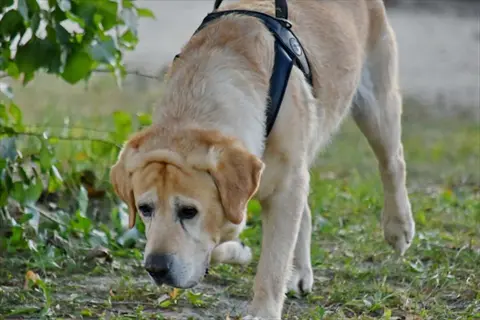
Y-Harness Design
- Fact: Y-shaped chest strap carefully avoids shoulder joints allowing full range of motion during running.
- Preferred for active dogs engaged in hiking, jogging, or canine sports requiring maximum mobility.
- Ergonomic design prevents uncomfortable chafing in armpit areas during extended outdoor adventure sessions.
- Lightweight materials reduce fatigue substantially during long-distance activities over varied terrain.
- Quick-snap buckles facilitate easy removal after muddy or wet outdoor excursions and play sessions.
- Ventilated mesh panels promote airflow efficiently during strenuous activities in warm climates.
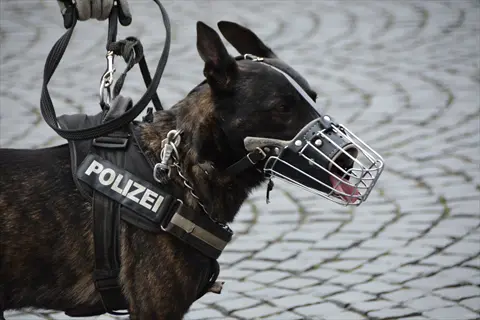
H-Harness Design
- Fact: Horizontal chest bar connects vertical straps creating H-shape that suits narrow-chested breeds perfectly.
- Ideal for sighthounds like Greyhounds and Whippets with deep chests and slender body profiles.
- Minimalist design reduces material contact points while maintaining secure torso containment during walks.
- Padded spine protector cushions vertebrae during jumping or sudden directional changes on trails.
- Adjustable girth strap prevents rotation around the body during active movement and exercise sessions.
- Limited padding makes this unsuitable for heavy pulling or working dog applications requiring durability.
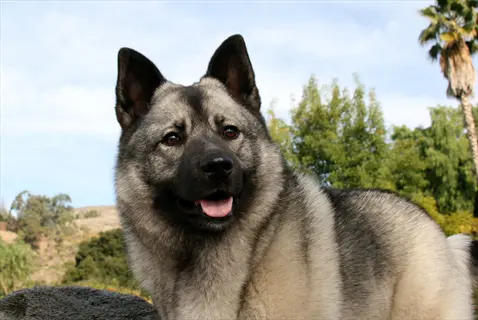
Norwegian Harness
- Fact: Unique horizontal chest band distributes pressure evenly without restricting shoulder movements.
- Recommended for sensitive dogs recovering from surgery or those with neck/spine sensitivity issues.
- Quick-release buckles enable fast removal during emergencies or stressful situations requiring urgency.
- Minimal contact points reduce overheating risk substantially during summer walks in warm climates.
- Reflective trim provides 360-degree visibility for enhanced safety during low-light conditions.
- Limited adjustability requires precise sizing measurements before purchase and regular use.
Breed and Size Selection
Small breeds such as Chihuahuas and Pomeranians benefit from vest or step-in harnesses. Vest and step-in harnesses distribute the pressure softly and gently across their delicate frames. Padded chest plates are necessary to avoid any pressure on their throats. Make sure you measure accurately, as they have tiny torsos that require a precise fit.
Medium-sized dogs, such as Beagles, flourish in a front clip, or dual-clip design. They allow the owner to have control of the dog without restricting movement. The adjustable strap is perfect for dogs with muscular builds. Make sure to look and check for rubbing behind the elbows, especially during rambunctious walks.
Large breeds like Labradors need no-pull harnesses with reinforced stitching. Their strength demands heavy-duty buckles. Protect joints during pulling. Fit must allow full shoulder rotation.
Giant Mastiffs require custom H-harnesses. Support deep chests without shoulder restriction. Wide straps distribute weight evenly. Measure your girth monthly, as even slight changes can significantly impact the fit.
Brachycephalic Bulldogs require step-in harnesses to avoid throat pressure. Wide neck openings prevent breathing issues. Use breathable mesh in summer. Check for armpit chafing daily.
Deep-chested Greyhounds need H-shaped designs. These prevent slipping with adjustable girth straps. Minimal shoulder coverage allows running freedom. Measure the narrow waist behind the ribcage.
Activity-Based Guide
For casual neighborhood walks use back clip harnesses that have padded chest plates. These harnesses evenly distribute the pressure of relaxed walks. Pair with standard 4-6 foot leashes for familiar routes. Armor reflective strips allow you to be retained in dusk hours.
During leash training sessions, front-attaching harnesses offer immediate control. Short leashes (3-4 feet) improve communications. Look for padded sternum plates that will avoid discomfort while correcting pulling. Dual clips will be useful for transitioning to the back clip.
Hiking excursions require the use of Y harnesses that allow some shoulder-free movement. For added stability on trails, consider using hands-free bungee leashes. You can also prepare for streams and mud with waterproof materials. Ensure you have a handle that allows you to lift the dog over obstacles if necessary.
Running partners need X-back designs for natural shoulder movement. Waist-attached bungee leashes maintain consistent tension. Breathable mesh prevents overheating. Check for chafing behind elbows after intense workouts.
Car travel necessitates crash-tested harnesses with certified seatbelt adapters. Shorter tethers reduce the range of motion within safety zones. The five-point adjustments prevent the driver from escaping during sudden stops. Never use a standard walking harness in a vehicle.
Casual Neighborhood Walks
- Ideal Harness: Back clip harness with lightweight padding
- Use standard 4-6 feet nylon leash for predictable environments
- Prioritize reflective materials for dawn and dusk visibility conditions
- Adjustable straps ensure comfort during 30-60 minute strolls
- Vest styles distribute pressure evenly across the chest area
- Avoid retractable leashes to prevent entanglement hazards
Leash Training Sessions
- Ideal Harness: Front clip or no-pull design
- Shorter 3-4 feet leash improves communication and control
- Dual attachment points allow training progression from correction to freedom
- Martingale mechanism discourages pulling without choking pressure
- Reinforced stitching withstands sudden direction changes during corrections
- Padded sternum plate prevents discomfort during training exercises
Hiking & Trail Adventures
- Ideal Harness: Y-harness or dual clip with handle
- Use hands-free bungee leash for stability on uneven terrain
- Weather-resistant nylon materials handle moisture and dirt exposure
- Backpack compatibility allows carrying water and emergency supplies
- 360-degree reflective stitching enhances visibility during low-light trail navigation
- Quick-release buckles facilitate emergency removal in entanglement situations
Running & Jogging
- Ideal Harness: X-back or H-back athletic design
- Waist-attached bungee leash maintains consistent tension during movement
- Breathable mesh prevents overheating during high-intensity exercise routines
- Ergonomic shaping aligns with natural shoulder blade movement patterns
- Minimal hardware reduces chafing at contact points during extended use
- Moisture-wicking lining keeps skin dry during strenuous physical exertion
Car Travel & Transport
- Ideal Harness: Safety-certified crash harness
- Vehicle attachment system with certified seatbelt adapter compatibility
- Five-point adjustment prevents wriggling escapes during vehicle motion
- Padded interior reduces pressure during sudden stops or collisions
- Short tether limits movement within designated safety zone boundaries
- Reinforced stitching meets international crash-test certification standards
Fitting and Materials
Nylon harnesses offer excellent durability for active dogs. They withstand daily walks and muddy excursions. Additionally, they are easily machine-washable for quick cleaning. However, please do not use them in warmer weather, as a non-breathable fabric does not work for dogs in the summer due to overheating reasons.
Measure your dog's neck where the collar usually lies. It is essential to keep two fingers between the tape and the skin. Measurements should be noted in inches and centimeters. For the chest, measure behind the front legs during exhalation. Leave plenty of space for bulky winter coats.
Always utilize the two-finger rule on each strap. Slide two fingers easily under each strap. Check the alignment of the horizontal straps. Check that your dog can walk freely. After 30 minutes, check the skin for any signs of redness.
Seasonal modifications reduce feelings of discomfort. For winter coats, loosen the straps up to approximately two inches. Tighten the straps when summer's shedding season occurs. Replace a winter coat with a breathable mesh above 80°F. If you are in the water, switch to waterproof neoprene below 50°F.
Leather harnesses are well adapted for use in cold conditions, while still requiring maintenance. They should only be hand-washed with a special leather cleaner. You should condition leather harnesses at least once a month to deter cracking. Leather will stiffen in extreme cold conditions. They are well-suited to fashion-focused owners who want a classic look!
Neoprene shines in activities with water while providing cushioning comfort. Rinse well after exposure to saltwater. The waterproof effect retains heat in warm to hot conditions. Ideal for swimming activities, dogs need comfy protection for their sensitive skin.
Nylon
- Durability: Highly resistant to wear and tear from daily use with active dogs
- Maintenance: Machine washable and quick-drying after muddy walks or swimming
- Climate Suitability: Non-breathable fabric retains heat during summer months
- Weight: Lightweight construction doesn't burden small or senior dogs
- Best For: Regular walks with durable stitching for strong pullers
- Cost: Most affordable option among common harness materials
Leather
- Durability: Develops protective patina over time but requires regular conditioning
- Maintenance: Hand-wash only with specialized leather cleaners to prevent cracking
- Climate Suitability: Insulates well in cold weather but stiffens in freezing temperatures
- Weight: Heavier than nylon may burden small breeds during extended activities
- Best For: Fashion-conscious owners wanting classic aesthetic appeal
- Cost: Premium pricing reflects artisanal craftsmanship and material quality
Neoprene
- Durability: Resists saltwater corrosion and chlorine damage from frequent swimming
- Maintenance: Rinse after ocean exposure to prevent material degradation over time
- Climate Suitability: Waterproof nature causes heat retention in warm environments
- Weight: Moderate density provides cushioning without excessive bulk
- Best For: Water activities and dogs with sensitive skin needing padding
- Cost: Mid-range pricing justifies comfort features and specialized use
Mesh
- Durability: Less resistant to abrasion from rough terrain or enthusiastic chewers
- Maintenance: Easy hand-washing but may retain odors without thorough drying
- Climate Suitability: Maximum breathability prevents overheating in hot climates
- Weight: Ultralight construction ideal for toy breeds and puppies
- Best For: Summer use and brachycephalic breeds prone to overheating
- Cost: Budget-friendly though may require more frequent replacement
Polyester Blend
- Durability: Reinforced fibers offer tear resistance comparable to premium nylon
- Maintenance: Retains color vibrancy through multiple washing machine cycles
- Climate Suitability: Moderate breathability balances warmth and cooling needs
- Weight: Lightweight yet substantial enough for medium-large breed activities
- Best For: All-season versatility with reflective options for night safety
- Cost: Mid-range pricing bridges gap between economy and premium materials
Neck Measurement
- Position tape measure where collar normally sits at neck base
- Measure circumference while dog stands naturally looking forward
- Allow two fingers' width between tape and skin for comfort
- Record measurement in both inches and centimeters for accuracy
- Avoid measuring over thick fur by parting hair to skin level
Chest Measurement
- Measure widest part behind front legs during natural exhalation
- Keep tape parallel to ground without constricting ribcage
- Ensure dog stands squarely with weight evenly distributed
- Add 2 inches (5cm) to measurement for growing puppies
- Take multiple readings to account for breathing variations
Weight Verification
- Weigh dog monthly to detect size changes affecting harness fit
- Note seasonal weight fluctuations exceeding 10% of body weight
- Adjust harness straps after significant gain/loss of 2+ pounds
- Use veterinary scales for accuracy with large/giant breeds
- Record weights to track growth patterns in puppies
Fit Assessment
- Perform two-finger test under all straps during first wearing
- Check for horizontal strap alignment without diagonal twisting
- Observe natural gait for restricted shoulder movement signs
- Inspect for fur matting or skin redness after 30-minute wear
- Verify hardware lies flat against body without digging in
Seasonal Adjustments
- Loosen straps for winter coats adding 1-2 inches of girth
- Tighten slightly when summer shedding reduces coat volume
- Switch to breathable mesh for high humidity above 80°F (27°C)
- Use neoprene in water temperatures below 50°F (10°C)
- Inspect elasticity monthly in extreme temperature conditions
5 Common Myths
Harnesses damage joints due to restrictions of natural movement while walking and during activities.
Checks to see that properly fitted harness is supportive of natural canine biomechanics and does not restrict joint areas of motion. Studies show that well designed harness systems distribute pressure in an even manner around the chest area in deference to pressure over the shoulders in strict regard to collars. The key being providing a proper fit where the maximum movement in an area is provided without causing chafing or pressure points that would cause discomfort.
Collars give greater control than harnesses for pullers and large breed dogs.
Harnesses afford better control and safety as they redirect pulling away from the vulnerable neck area. Front clip and no pull harness designs give owners leverage so they are able to guide the no pull dog. Also, again, the trachea can be damaged by collars, while harnesses distribute the pressure on the dog's torso That protects the cervical area of the dog. This is especially called for with breeds that are prone to spinal harm such as Doxies.
No pull harnesses are cruel torture devices that cause pain and discomfort to dogs.
The ethical design of no-pull harnesses uses the modality of redirection through teaching gentle pressure instead of pain. They use even pressure across the sternum when dogs are pulling forward, just as a horse's harness would do. This is a humane way of protecting the dog's physical health and the owner-lead connection, allowing positive reinforcement techniques for the dog to be far more effective.
One size fits all with regard to a harness for dogs, regardless of breed, shape of body or age.
The sizing of a harness must be fitted to the exact dimensions and conformations of the individual dog. Deep-chested breeds like Greyhounds require one kind of silicone design while the barrel-chested breeds require another design like Bulldogs. Puppies need to have adjustable designs in the harness in order to provide for growth periods. Harnesses that fit incorrectly cause chafing of the skin, prevent proper respiration or allow for escaping. The neck and chest girth should in every case be measured, keeping in mind the mobility of the shoulder and the thickness of the coat.
Puppies don't need harnesses since they're lightweight and won't injure themselves pulling.
Puppies benefit significantly from harnesses during critical development stages to protect their fragile tracheas and undeveloped joints. Early harness introduction prevents collar-related injuries during leash training while establishing safe walking habits. Specially designed puppy harnesses accommodate rapid growth with adjustable straps and padding where their soft bones need protection during exploration.
Conclusion
Choosing the right harness depends on three crucial factors: the dog's breed, the favorite activity of the dog, and the precise fit. This is important because Greyhounds that are deep-chested need a different design harness from a stocky Bulldog, and the harness needed for running partners is different from that required by casual walkers. Measure with care for each purpose.
Perform routine fit checks especially after growth spurts and time of year coat changing periods, using the two-finger check monthly. Look closely for chafing. Ensure that all straps are adjusted properly to accommodate temperature changes. A correct fit keeps your companion injury-free and escape-free, which guarantees utmost comfort during all your adventures.
Use these insights to make safer walks starting today. Choose a harness that meets your dog's specific needs. Feel comfortable knowing you are protecting their joints and trachea. Share these insights with other dog owners to educate the public.
External Sources
Frequently Asked Questions
What is the most comfortable dog harness?
Comfort depends on your dog's breed, size and activity level. Well-fitted padded harnesses with breathable materials like mesh prevent chafing while distributing pressure evenly across the chest and shoulders.
- Vest harnesses suit small dogs needing extra padding
- Y-shaped designs allow shoulder freedom for active breeds
- Neoprene provides cushioning for water activities
- Measure carefully and follow the two-finger fit rule
What distinguishes H-shaped and Y-shaped harness designs?
These configurations address different anatomical needs through their strap placement and pressure distribution patterns across the torso and shoulders.
- H-shaped: Horizontal chest bar suits deep-chested breeds like Greyhounds
- Y-shaped: Avoids shoulder joints for running/hiking freedom
- H-design prevents rotation on narrow-bodied dogs
- Y-style reduces chafing during high-movement activities
Which harness type is better for dogs that pull?
Front-clip harnesses effectively redirect pulling force through chest attachment points. The design discourages pulling by turning the dog sideways when tension is applied without causing tracheal damage.
- No-pull models add martingale systems for gentle correction
- Dual-clip options allow training progression
- Prioritize reinforced stitching for strong breeds
- Avoid back-clip designs which encourage pulling
Should dogs wear harnesses constantly?
While properly fitted harnesses are safe for extended wear, continuous use may cause skin irritation. Regular removal allows inspection for pressure points and prevents fur matting.
- Remove during crate time and overnight
- Check for redness after prolonged wear
- Rotate between multiple harnesses if needed
- Adjust seasonally for coat thickness changes
What defines a no-pull dog harness?
These specialized designs incorporate pressure-redirecting features that discourage pulling through humane mechanisms rather than discomfort.
- Front chest ring turns momentum sideways
- Martingale system tightens only during pulling
- Sternum padding distributes correction pressure
- Dual attachment points for training stages
Why choose harnesses over collars?
Harnesses provide superior safety by eliminating neck pressure that can cause tracheal damage. They distribute force across the stronger chest area while offering better control during walks.
- Prevent cervical injuries in small breeds
- Reduce escape risks through torso coverage
- Minimize choking during sudden movements
- Support dogs with respiratory conditions
How do I properly measure for a harness?
Accurate measurements ensure comfortable fit and prevent chafing or escape risks through precise sizing of key body areas.
- Neck: Base where collar sits with two-finger space
- Chest: Widest part behind front legs
- Record in inches and centimeters
- Account for seasonal coat changes
- Verify monthly weight fluctuations
What harness features suit car travel?
Vehicle-safe harnesses incorporate crash protection mechanisms through reinforced construction and certified attachment systems.
- Five-point adjustment prevents escapes
- Certified seatbelt adapters
- Padded interior reduces impact force
- Short tethers limit movement range
- Rigorous stitching meeting safety standards
Are harnesses suitable for puppies?
Specially designed puppy harnesses protect developing bodies through adjustable features that accommodate rapid growth while preventing injuries.
- Protect fragile tracheas during training
- Extra padding for bony prominences
- Adjustable straps for growth spurts
- Lightweight materials prevent burden
- Establish safe walking habits early
What materials work best for different climates?
Climate-appropriate materials balance comfort and functionality through breathability, water resistance, and temperature regulation properties.
- Mesh: Maximum airflow for hot conditions
- Neoprene: Waterproof protection for wet climates
- Nylon: Durable all-season performance
- Leather: Cold-weather insulation
- Polyester blends: Reflective safety features

